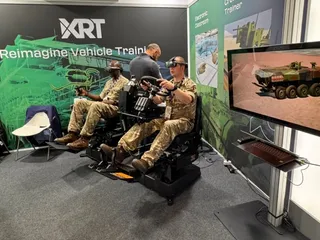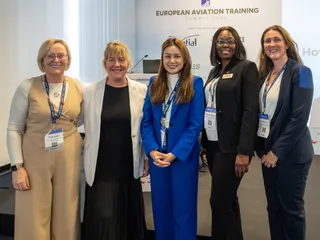APATS Moves to Bangkok in 2026 - The Right City, the Right Moment
Contact Our Team
For more information about how Halldale can add value to your marketing and promotional campaigns or to discuss event exhibitor and sponsorship opportunities, contact our team to find out more
The Americas -
holly.foster@halldale.com
Rest of World -
jeremy@halldale.com
By Andy Smith, CEO, Halldale Group
This morning, in my opening remarks at APATS 2025, I announced an exciting next chapter: APATS 2026 will take place at the Queen Sirikit National Convention Center (QSNCC) in Bangkok, Thailand, a return to a city where we last staged APATS a decade ago. APATS 2026 will also mark our 22nd event in the region, a milestone that reflects both the trust of our community and the pace of change across Asia Pacific.
Why Bangkok, and why now? Asia Pacific is the growth engine of global aviation. IATA’s 2025 outlook shows Asia-Pacific passenger numbers growing at the fastest rate globally (≈7.9%), with momentum driven by strong economies and tourism-led recovery. Airport connectivity across the region has also surged, up 13% year-on-year, underscoring how quickly networks and markets are deepening. And looking ahead, major OEM forecasts point to sustained expansion, with Asia and the Middle East leading long-term traffic growth and the Asia-Pacific aircraft services market expected to more than double by 2043.
Under the 'Thailand Vision’ program, major airport and transport net upgrades are set to position Thailand, and Bangkok, as a key Asia-Pacific aviation hub more than doubling passenger capacity by 2032-35.
Together, these signals make a compelling case for putting APATS at the heart of the action.
APATS has always been about practical outcomes. Over the past two cycles we’ve listened carefully to delegates and exhibitors, and we’ve re-designed the programme to be more dialogue-led: interactive workshops, deep-dive panels, structured Q&A, and curated networking, all alongside an expanded trade show. We now run four conference stream, Pilot, Cabin Crew, Maintenance, and ATO, with clear through-lines from CBTA/EBT and human factors to AI/data, XR/VR, selection and trainer development, and SMS-aligned training that ties learning directly to operational performance. The feedback has been clear: more discussion, more comparison of what actually works on the line, and more time to connect with peers and partners.
On the exhibitor side, the floor is changing just as fast. We’re seeing more technology companies than ever, data and analytics, adaptive learning platforms, VR/XR solution providers, AI-enabled tools for training design and assessment, sitting alongside established simulator OEMs and training providers. That mix reflects where the industry is heading: evidence-based training powered by better data, delivered through richer tools, and measured against real operational outcomes.
QSNCC gives us the canvas to do this right: modern, central, and accessible for regional and international teams. We will use the space to grow the show floor, preserve quiet areas for business meetings, and scale the dialogue-based formats that delegates have asked us to double down on. Bangkok’s connectivity, hotel base, and industry presence make it a natural gathering point as airlines, ATOs, and MROs across Asia ramp up hiring, fleet induction, and next-generation training systems.
APATS has been part of Asia Pacific’s training story for over two decades. Moving to Bangkok in 2026 is about meeting the region where its growth is, and where its next set of questions will be asked and answered. I’m grateful to everyone who helped us get here, speakers, sponsors, exhibitors, and delegates, and I’m excited for what we’ll build together at QSNCC.
See you in Bangkok for APATS 2026.


